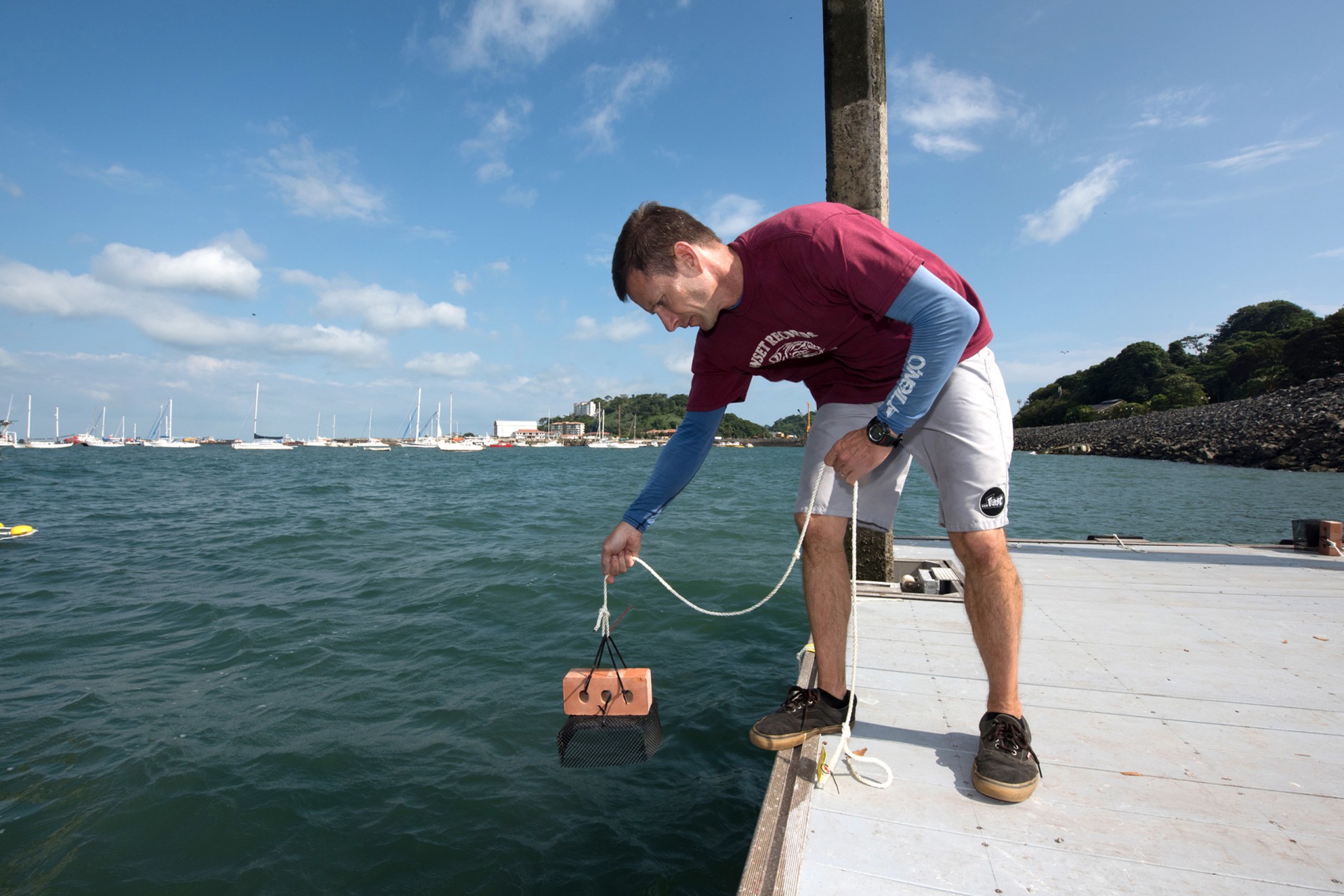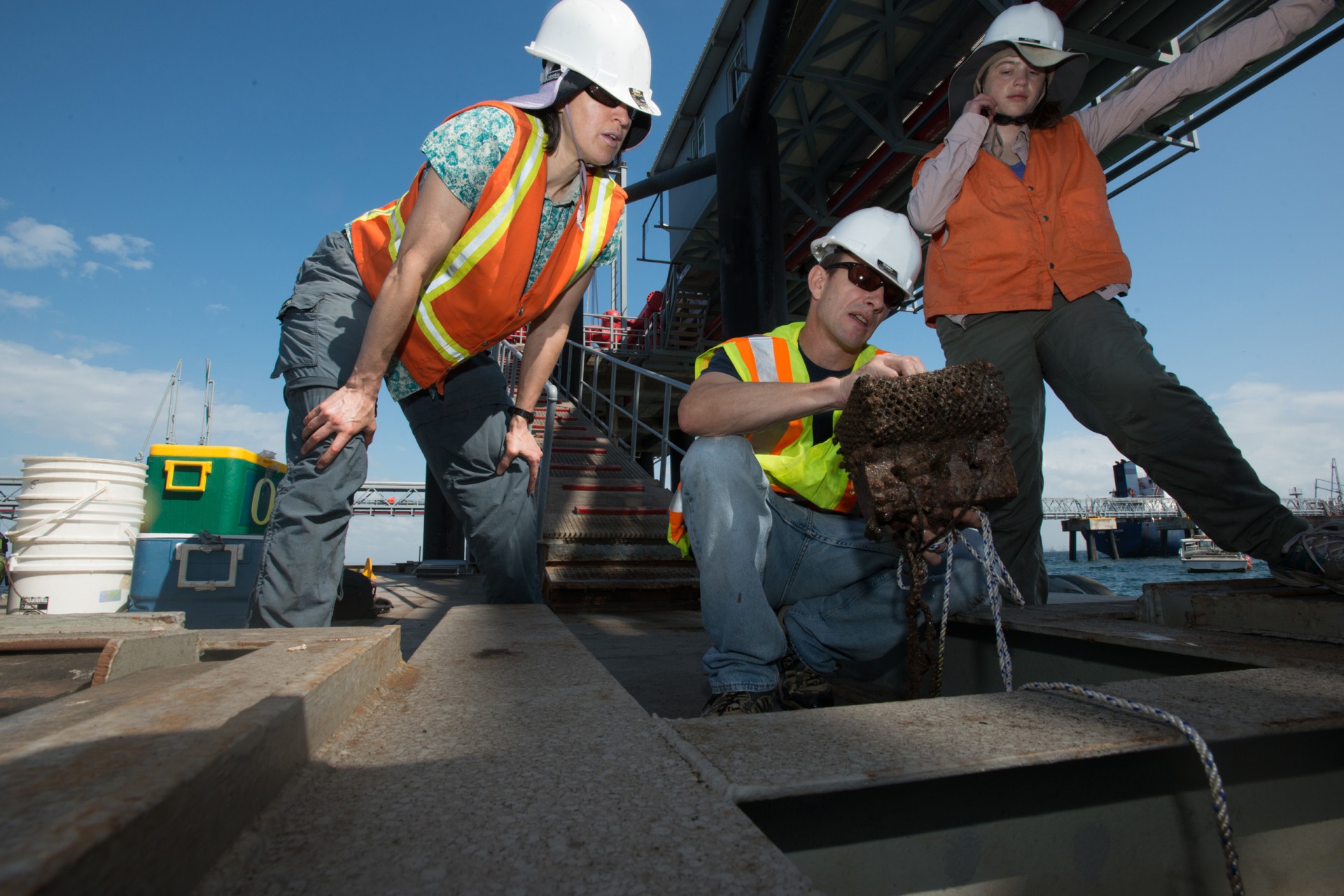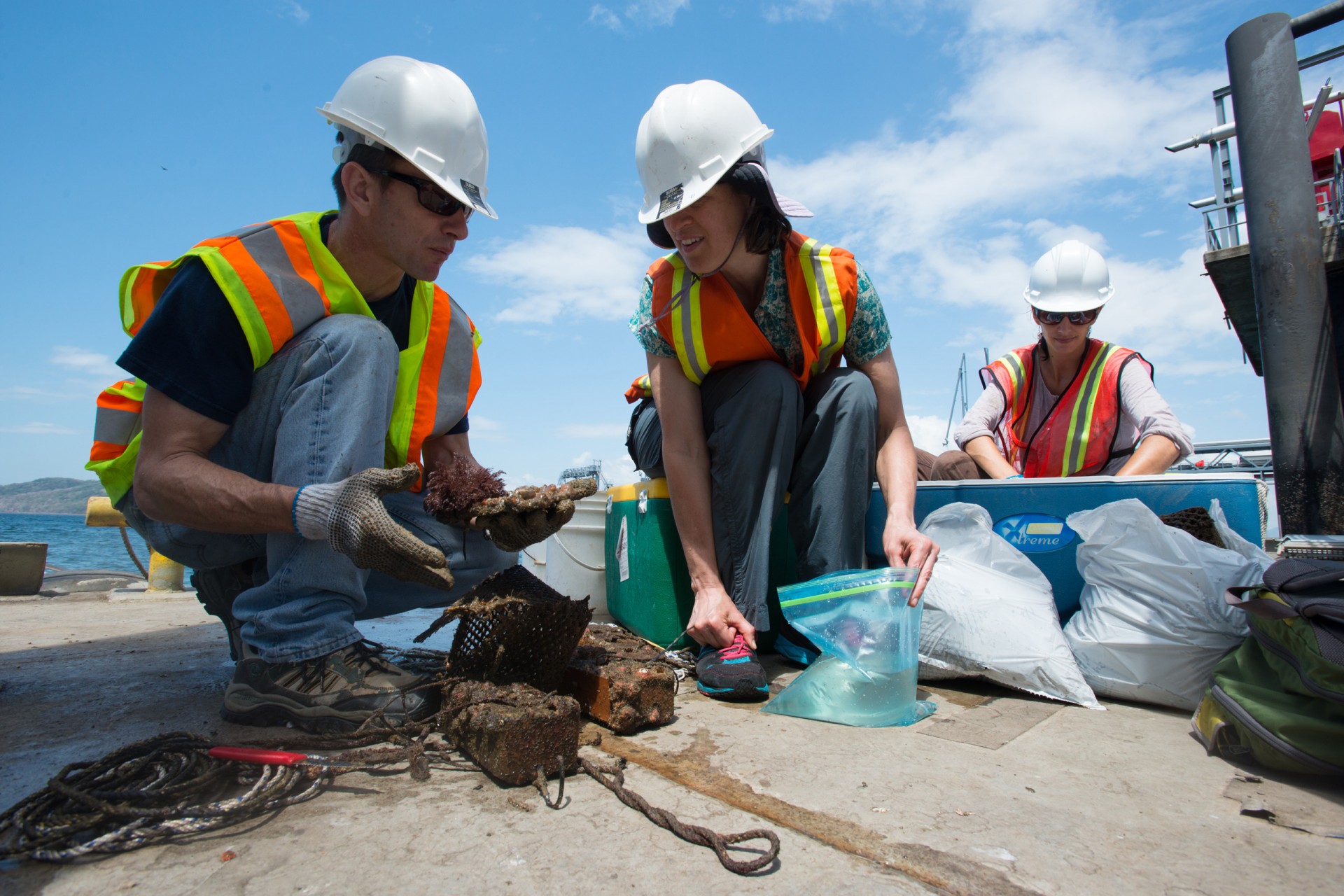Leafcutter ants have blind
spots, just like truck drivers
Invading the
hemisphere
Coastal study from Panama
to Alaska discovers where
marine invaders fare better
Naos Island Marine Laboratories, Panama City
Initial results from a massive study comparing marine organisms sampled along the Pacific coast from Alaska to Panama with samples from the Atlantic show that the success of invaders is lopsided.
Humans move marine species all over the world. The question Mark Torchin asks is why huge parts of the marine world aren’t homogeneous? What keeps these organisms from moving in and becoming successful? Is it just a matter of time or will natural differences between regions keep some globally mobile invaders from spreading everywhere?
“Not only is this an interesting question in terms of testing ecological hypotheses, some of these introduced species are problematic,” says Torchin. “We’re trying to understand what limits distribution and abundance, and why some introduced species become abundant and cause problems.”
“If you understand that, then you can potentially mitigate their impact.”
A National Sciences Foundation-funded project allowed Torchin, Greg Ruiz (at the Smithsonian Environmental Research Center) and former Smithsonian fellow Amy Freestone (now at Temple University) to deploy hundreds of settlement plates in Alaska, California, Mexico and Panama. The plates collect a colorful assortment of sessile marine invertebrates — little critters like sponges that live on fixed surfaces —both native and introduced.
A goal of the study is to compare changes in biodiversity from cold northern latitudes to warm equatorial regions. As suspected, biodiversity increases, but the team’s research shows that species interactions (like predation and competition) are stronger in the tropics and this appears to offer some resistance against invasive species.
The research has also demonstrated a trend in Panama: More species from the Caribbean side of Panama have invaded the Pacific than vice versa. But invasive species appear patchier in the Pacific — in surveys, 50 percent are found at only one site — when compared to the Caribbean, where most introduced species are present at 90 percent of the study sites.
Next, Torchin plans to expand research to areas of Panama far from shipping routes and to protected areas like Coiba National Park, where predation may be higher than some overfished parts of the Pacific.
“Humans influence all aspects of biodiversity both the native species in a particular area and the introduced species we are actively moving around,” says Torchin. “So, humans can have a direct impact on native biodiversity, which may determine how a marine community responds to new invasions. Essentially, we are inadvertently tinkering with both ends of the equation.”















